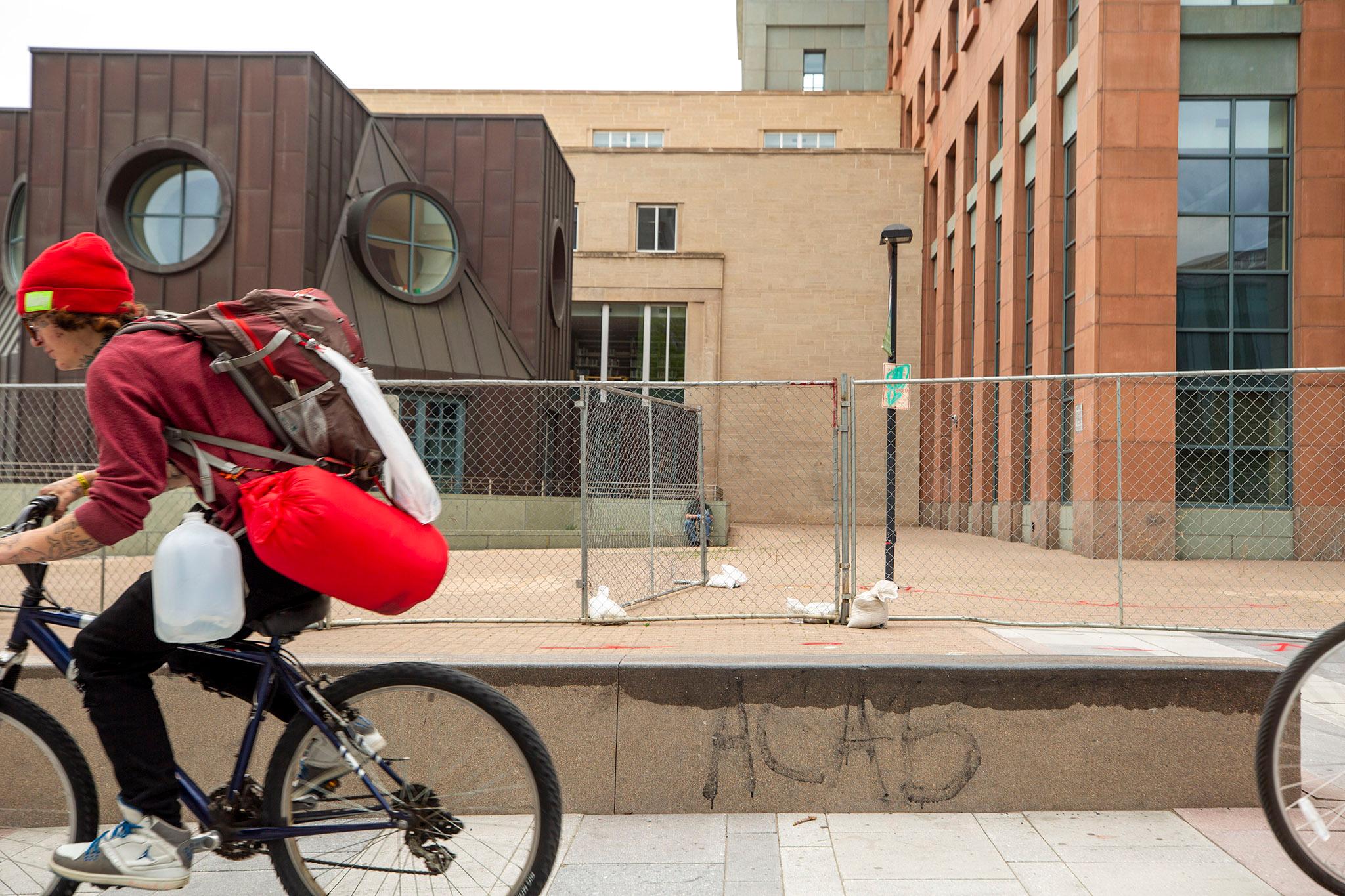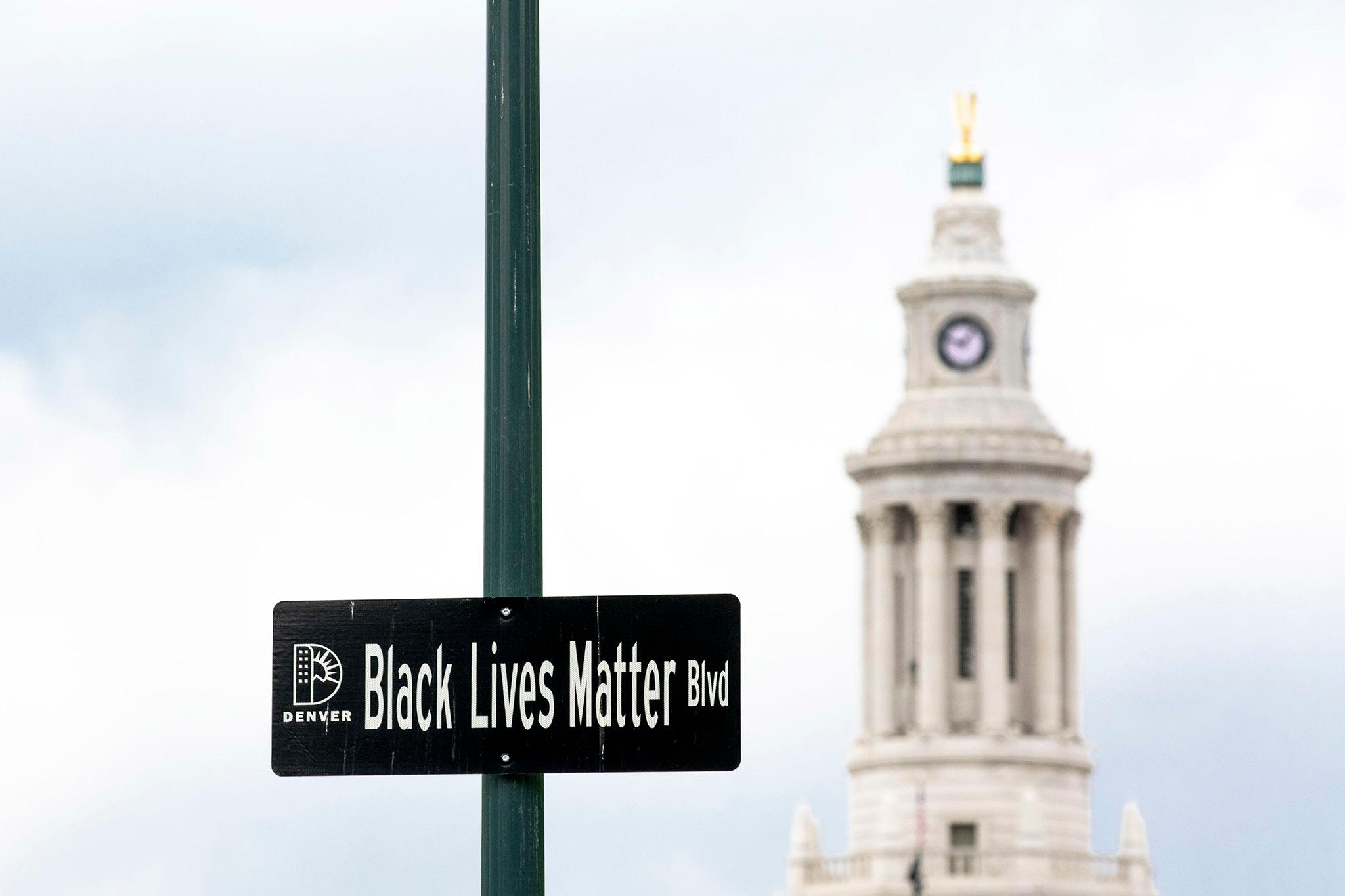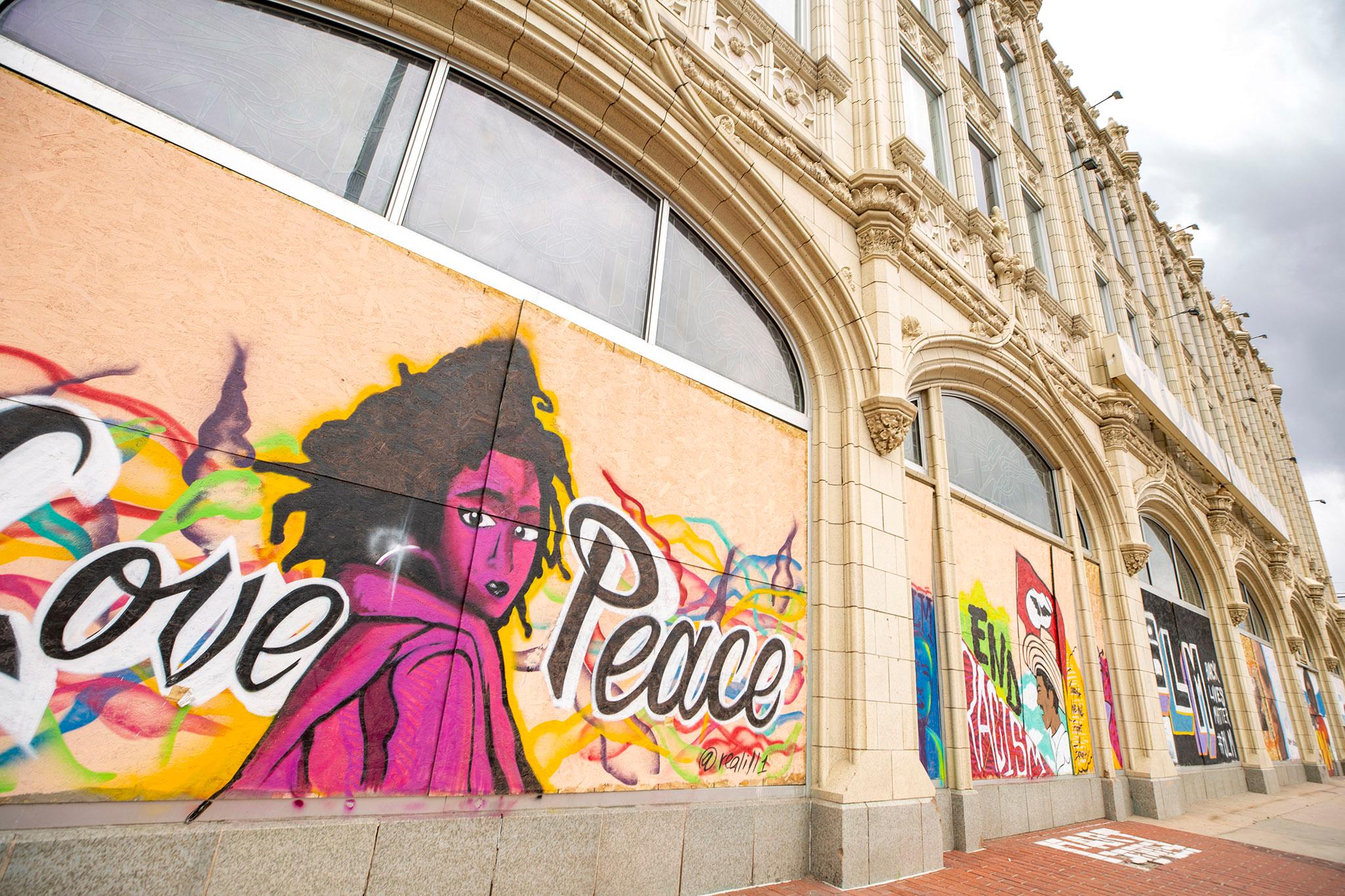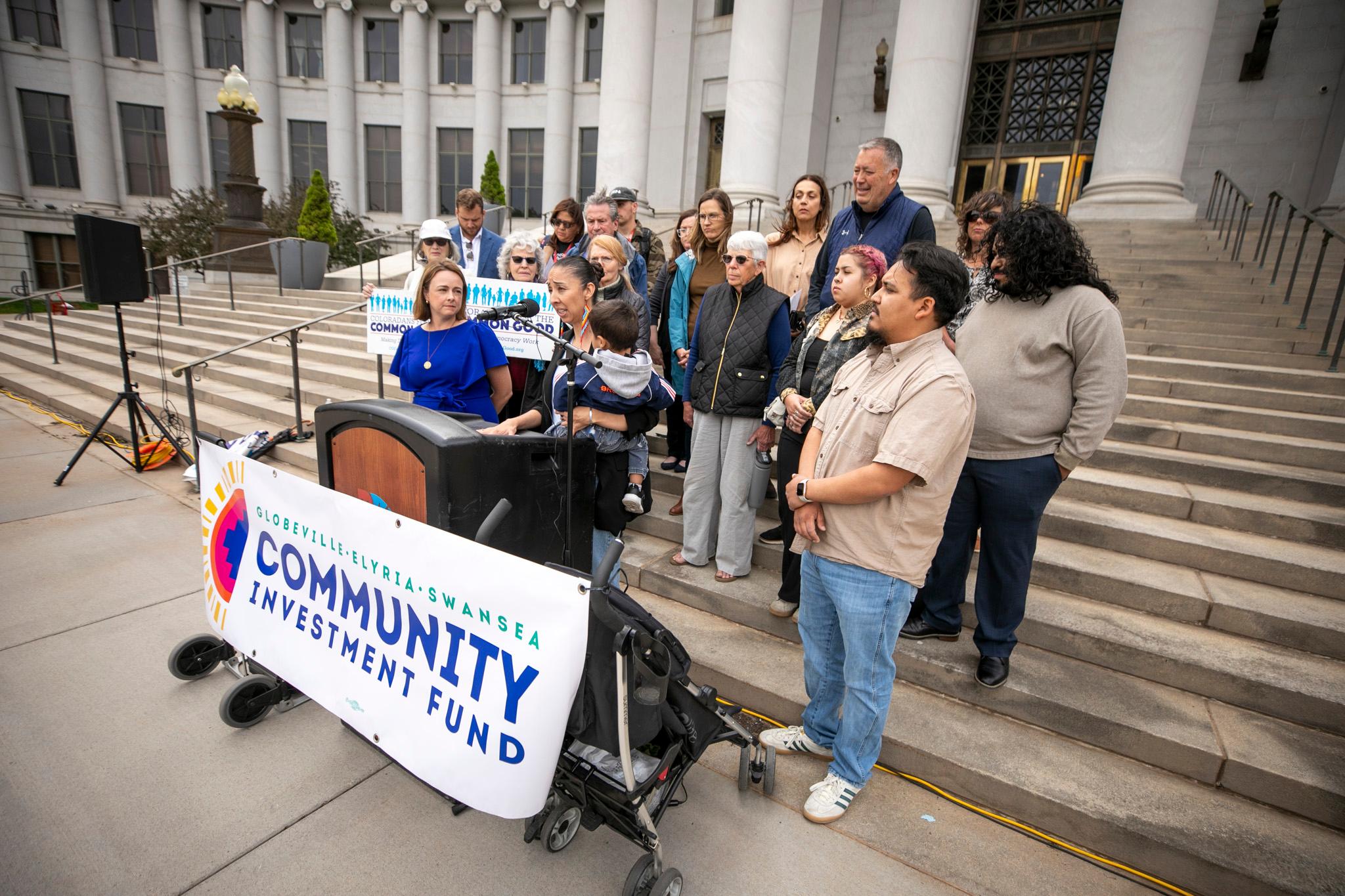Boarded up windows and construction fencing around city landmarks downtown are a familiar sight. So are signs in windows and on lawns reminding neighbors and passersby every day that Black Lives Matter.
The graffiti is fading, but spray painted messages from last summer's protests remain, scrawled on sidewalks and the sides of buildings downtown. These are relics of a changed Denver, and signs of a Denver still going through the growing pains of change.
Tuesday marked the one year since George Floyd was murdered by a Minneapolis police officer.
It was a day that altered the lives of those who did not know him, too -- lives all around the country and even the world. Anger over Floyd's murder helped launch and feed a movement in Denver that, a year later, is still changing our city's legal and law enforcement systems.
It's clear that the movement also left an imprint on the city's physical landscape long after the protests ended.








The State Capitol, a stately neoclassical building, was boarded up after the protests last summer, covered in spray-painted graffiti reading "BLM," "ACAB," "No Justice," "protect Black lives" and the names of George Floyd, Elijah McClain and others whose lives had been taken by police.
A year later, the building has been power washed clean, and the boards in the windows have long been removed. But take a closer look around the Capitol grounds and you can see tiny remnants of last year's protests: stickers on street posts, messages scrawled in spray paint on the sidewalks.


The pedestal that once held a Civil War monument on the west steps of the Capitol stands empty. Protesters toppled the monument, which was designed by a Union soldier whose cavalry was involved in the Sand Creek Massacre, last June. It will soon be replaced with a Sand Creek Massacre memorial.
Just down the steps, across Lincoln Street, Lincoln Memorial Park sits in disuse, fenced off to visitors, its grass patchy and overgrown. Last year, a large homeless encampment formed in the park in the wake of the protests. In July, the city brought in State Patrol troopers to sweep the encampment, evicting its unhoused residents without notice. The fence still stands.
Across Broadway is Civic Center Park, which last year lost two statues during the protests. Christopher Columbus was torn down the night after the Civil War statue came down, and the city responded by preemptively removing a statue of Kit Carson, known for his role in Western expansion and his attacks on Native Americans.









Other relics of last year's protests still stand in other parts of the city. Some have vanished.
Spray Their Name's Elijah McClain mural behind Epic Brewing is now gone, painted over with the next work in the brewing company's art rotation.

Nearby, though, at 2855 Walnut Street, the Breonna Taylor mural still stands, hanging over the Stem Ciders patio. On a weekend night, the tented tables are full of people drinking and laughing, backdropped by Taylor enshrouded in flowers.

And the George Floyd mural still stands on Colfax and High Street, where the Spray Their Name team painted him last summer. It has survived several vandalism attempts, including one that left yellow paint splattered over the the top of Floyd's head last fall. Now, it's fully restored. On May 26, the day after the anniversary of Floyd's murder, fresh yellow roses sat at the base of the mural.












